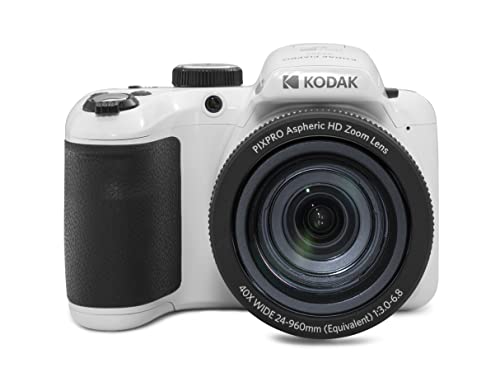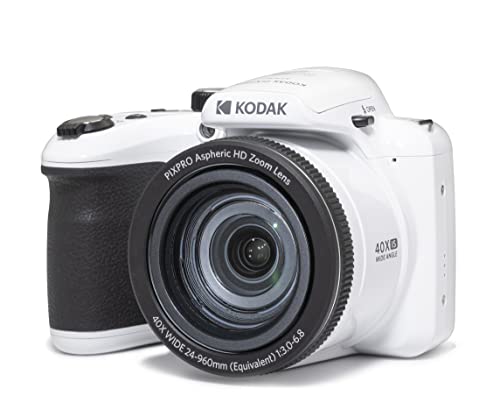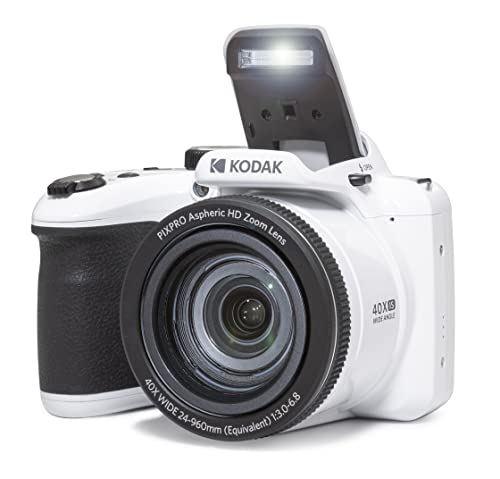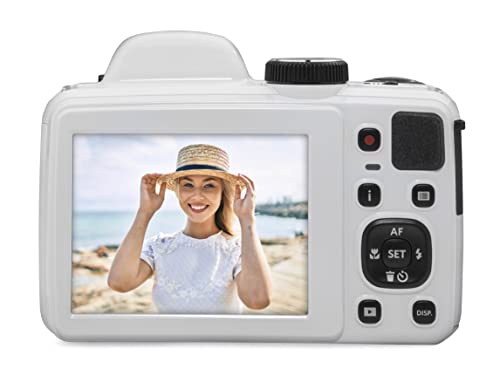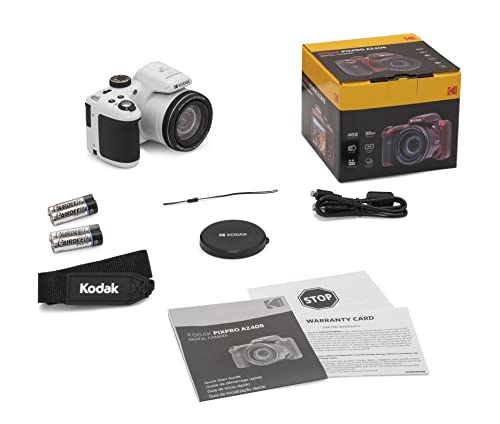



When it comes to capturing stunning photos and videos, having the right digital camera specs is crucial. As a passionate photographer, I have spent years exploring different camera models and comparing their specifications to find the best one for my needs.
From resolution and sensor size to autofocus capabilities and image stabilization, every detail matters when selecting a digital camera. In this article, I will share my insights on the best digital camera specs that every photographer should consider before making a purchase.
Join me on this journey as we delve into the world of digital photography and discover the key features that can take your images to the next level. Let’s explore the exciting realm of digital camera specs together!
Best Digital Camera Specs
When it comes to choosing the best digital camera, there are several key specifications to consider. As a photography enthusiast, I always look for cameras with high resolution sensors. A camera with a sensor resolution of at least 20 megapixels ensures that my images are sharp and detailed, even when cropped or enlarged.
Another important feature I consider is the camera’s ISO range. A wide ISO range allows me to shoot in various lighting conditions without compromising image quality. I prefer cameras with an ISO range of 100-25600 or higher for optimal flexibility.
- Aperture: I look for cameras with a wide aperture range, such as f/1.8 to f/22, to achieve creative depth of field effects.
- Shutter Speed: A fast shutter speed of at least 1/4000 sec ensures that I can capture fast-moving subjects without motion blur.
- Autofocus System: A reliable autofocus system with multiple focus points helps me achieve accurate and sharp focus in various shooting scenarios.
Megapixels
When considering the specifications of a digital camera, one of the key factors to look at is the number of megapixels it offers. Megapixels determine the resolution and clarity of the images captured by the camera.
Higher megapixel counts result in sharper and more detailed images. However, it’s important to note that more megapixels don’t always mean better image quality, as factors like sensor size and lens quality also play a significant role in determining image sharpness.
- Resolution: The number of megapixels directly affects the resolution of the images. More megapixels allow for larger prints and more flexibility in cropping photos.
- Image quality: Higher megapixel counts can lead to better image quality, especially when shooting in good lighting conditions. However, in low light situations, a higher megapixel count may result in more noise in the images.
- File size: Images captured with higher megapixel cameras tend to have larger file sizes, which may require more storage space on memory cards and hard drives.
Sensor Size
In the realm of digital cameras, one of the crucial specifications to consider is the size of the sensor. The sensor size determines how much light the camera can capture, which in turn affects the image quality.
When it comes to sensor size, bigger is generally better. A larger sensor allows for more light to be captured, resulting in better low-light performance, improved dynamic range, and higher image quality. In contrast, smaller sensors may struggle in low-light conditions and produce images with more noise.
- Larger sensors are typically found in professional-grade cameras, while compact cameras often have smaller sensors.
- Common sensor sizes include full-frame, APS-C, and micro four-thirds, each offering different benefits and trade-offs in terms of image quality and camera size.
ISO Range
When choosing a digital camera, the ISO range is a crucial specification to consider. The ISO range determines the camera’s sensitivity to light, allowing you to shoot in various lighting conditions with different levels of brightness.
Typically, a wider ISO range gives you more flexibility in low-light situations, allowing you to capture clear and sharp images without introducing too much noise. On the other hand, a narrower ISO range may limit your ability to shoot in low light but can provide better image quality in optimal lighting conditions.
- Low ISO: Cameras with lower ISO settings (e.g., 100-400) are great for bright outdoor photography or studio settings where ample light is available.
- High ISO: Cameras with higher ISO settings (e.g., 1600-12800) are ideal for low-light conditions or fast-moving subjects where you need to use a faster shutter speed to capture the action.
Understanding Aperture Range
One crucial aspect to consider when looking at digital camera specifications is the aperture range. The aperture range refers to the range of available aperture settings on a camera, which control the amount of light that enters the lens.
Having a wide aperture range allows for greater flexibility in various lighting conditions. A camera with a wide aperture range can capture clear images in both low-light situations and bright sunlight by adjusting the aperture size accordingly.
- Low Aperture: A low aperture setting (e.g. f/1.8) allows more light to enter the lens, making it ideal for low-light photography or achieving a shallow depth of field for portraits.
- High Aperture: A high aperture setting (e.g. f/16) reduces the amount of light entering the lens, resulting in sharper images with a greater depth of field, perfect for landscape photography.
Autofocus System
One of the key features to consider when looking at digital camera specs is the autofocus system. This system is crucial for ensuring that your photos are sharp and in focus, especially when capturing fast-moving subjects.
Modern digital cameras come equipped with advanced autofocus systems that use a combination of phase detection, contrast detection, and hybrid autofocus technologies to quickly and accurately focus on your subject.
- Phase Detection: This autofocus method uses sensors to compare the light coming through different parts of the lens to determine the correct focus point.
- Contrast Detection: This system analyzes the contrast in the image to find the sharpest point and adjust the focus accordingly.
- Hybrid Autofocus: Combining the benefits of both phase detection and contrast detection, hybrid autofocus systems offer improved speed and accuracy.
Understanding Image Stabilization in Digital Cameras
When it comes to capturing sharp and clear images, one of the key factors to consider is image stabilization. This technology helps reduce the effects of camera shake, resulting in sharper photos even in low light conditions or when using a telephoto lens.
Image stabilization works by either shifting the camera’s sensor to compensate for movement or by adjusting the optical elements within the lens. This ensures that the image remains steady and in focus, even if the camera is slightly moved during the exposure.
- Types of Image Stabilization:
- 1. Optical Image Stabilization (OIS): This system uses gyroscopic sensors to detect camera movement and then adjusts the lens elements to counteract it.
- 2. In-body Image Stabilization (IBIS): In this type, the camera’s sensor itself moves to compensate for shake, making it ideal for cameras with interchangeable lenses.
Video Capabilities
When it comes to choosing the best digital camera, video capabilities play a crucial role in today’s multimedia-driven world. A camera’s ability to record high-quality videos has become a key factor for many consumers, especially those who want a versatile device that can handle both photography and videography.
When looking at a digital camera’s video capabilities, consider factors such as resolution, frame rate, codec support, and video stabilization. Higher resolution videos provide more clarity and detail, while higher frame rates allow for smoother motion in videos. Codec support ensures compatibility with different devices and editing software, while video stabilization technology helps reduce shaky footage.
- Resolution: Look for cameras that can record in at least 4K resolution for crisp and detailed videos.
- Frame Rate: Higher frame rates, such as 60fps or 120fps, are ideal for capturing fast-action scenes and creating smooth slow-motion effects.
- Codec Support: Cameras that support popular codecs like H.264 or H.265 make it easier to edit and share videos across different platforms.
- Video Stabilization: Built-in stabilization features, such as optical or digital image stabilization, help reduce camera shake and produce steady footage.
In conclusion, when choosing a digital camera with the best video capabilities, look for a model that offers high-resolution recording, fast frame rates, versatile codec support, and effective video stabilization. These features will ensure that you can capture stunning videos with your camera and take your videography skills to the next level.
Best digital camera specs
Features
| Part Number | 4K Digital Camera |
| Model | 4K Digital Camera |
| Warranty | 1 Year Warranty |
| Color | Black |
| Is Adult Product | |
| Size | Compact |
Features
| Part Number | 5260B009 |
| Model | 5260B009 |
| Warranty | 1 year coverage for parts |
| Color | Black |
| Is Adult Product | |
| Size | Full-Size |
Features
| Part Number | DC205X |
| Model | DC205X |
| Warranty | 1 Year Warranty |
| Color | Black |
| Size | Compact |
Features
| Part Number | 1763 |
| Model | Z f FX |
| Warranty | 1 year limited manufacturer |
| Color | Black |
| Release Date | 2023-09-20T00:00:01Z |
| Size | Compact |
Features
| Part Number | DC402-AF |
| Model | DC402-AF |
| Warranty | 1 |
| Color | White |
Features
| Part Number | AZ405-WH |
| Model | AZ405-WH |
| Warranty | 1 year manufacturer |
| Color | White |
| Release Date | 2022-11-05T00:00:01Z |
| Language | English |
Q&A:
What is the best resolution for a digital camera?
The best resolution for a digital camera is typically around 20-30 megapixels. This allows for high-quality, detailed images.
What is the ideal sensor size for a digital camera?
The ideal sensor size for a digital camera is usually a full-frame sensor, which provides better image quality and more control over depth of field.
What is the recommended ISO range for a digital camera?
The recommended ISO range for a digital camera is typically between 100 and 3200, with some cameras capable of reaching higher ISO values for low-light shooting.
What kind of lens is best for a digital camera?
A high-quality prime lens or zoom lens with a wide aperture is often recommended for digital cameras, as they can provide sharp images with good bokeh and low light performance.








































